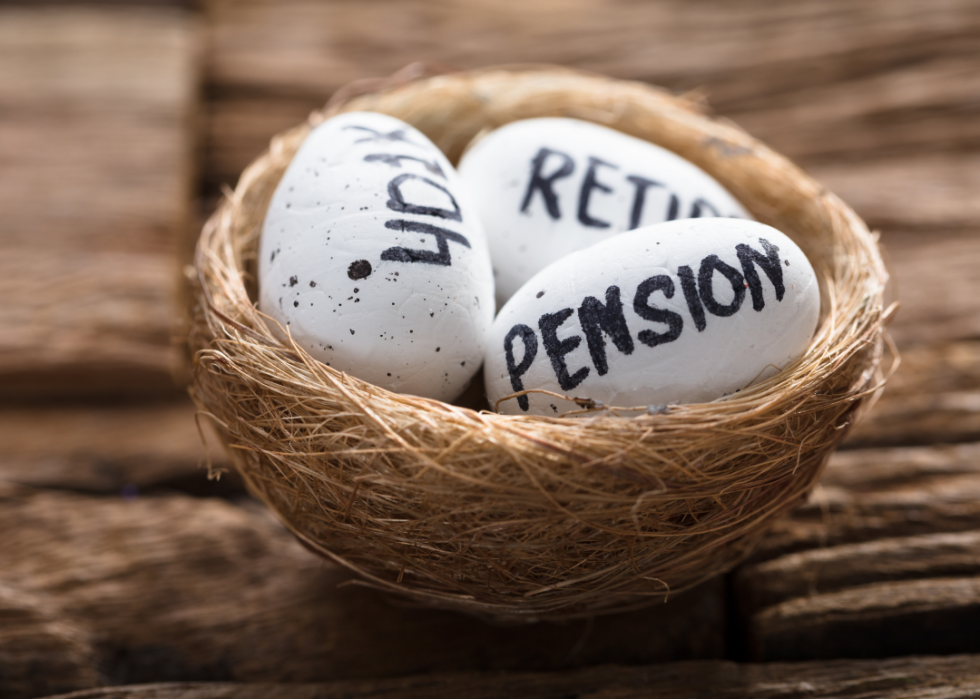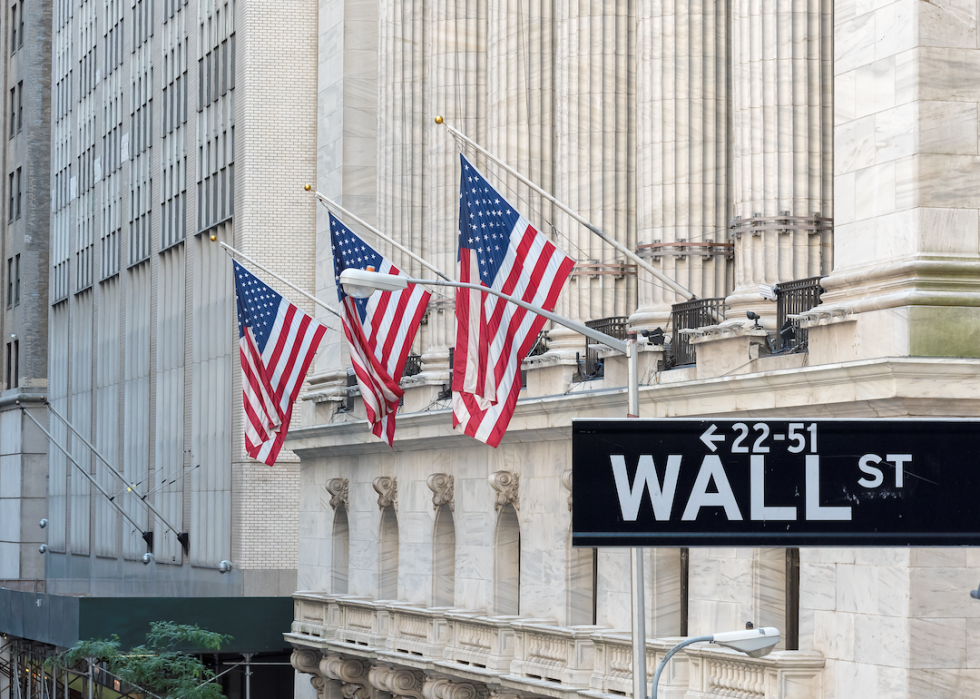
15 ways saving for retirement has changed in the last 50 years
15 Ways Saving for Retirement Has Changed in the Last 50 Years
America is facing a retirement crisis. The median 401(k) savings amount for an investor age 65 or older at investment advisory firm Vanguard is $58,035. This is at a time when it is estimated that it will take more than $1 million in savings to generate enough interest to support a 30-year retirement at $40,000 per year.
It is estimated by the U.S. Government Accountability Office that 41% of Americans age 35 to 64 will run out of money in retirement. Of Americans age 55 and older, 48% have nothing in their 401(k) or other individual retirement accounts; 29% of these older individuals have no pensions, individual retirement accounts (IRA), or 401(k) plans. With Social Security slowly moving toward insolvency and with the problem likely to get worse for millennials, the crisis may be a problem that defines the nation’s economy and politics for years to come.
Retirement was not always complicated. Between World War II and the 1980s, retirement was a benefit given for a lifetime of service. It was common for public and private employees to have fully funded pensions that were voluntarily or involuntarily contributed to. These pensions, along with Social Security, would be enough to provide a comfortable retirement.
However, with rising health care costs, a phasing-out of pensions, longer lives, and a less-than-certain future for Social Security, retirement planning has become more of a hit-or-miss proposition. While the well-to-do have increased their retirement-ready holdings, those in the working classes have been forced to navigate retirement readiness with fewer resources and less guidance than their parents.
Stacker looked at Gallup’s reporting on retirement and created a list of 15 takeaways on how retirement has changed in the last 50 years. For this story, we are not only looking at how economic changes—such as the switch from an industrial to a commercial base—have altered the equation, but how other factors, such as longevity and race, have dramatically changed how we see work and retirement.
Following World War II, the United States was one of the only major industrial nations not destroyed in the fighting. This allowed the nation to become the world’s factory, helping the average American laborer achieve the American dream of homeownership and income security. However, as the world recovered, challengers to America’s industry emerged, with many being able to make what the United States made quicker and cheaper. As the United States moved away from industrialization, many who expected the same lives their parents and grandparents had are finding out that the game changed.
Keep reading to learn how retirement-saving is different today than it was 50 years ago.
You may also like: Article: How to run your retirement portfolio like Yale's endowment

6 in 10 parents jeopardize retirement savings to support adult children
With income growth being largely flat for most Americans and college tuition skyrocketing, many millennials have found it hard to leave the nest. With their parents shouldering their continued expenses, the funds needed to carry adult children must come from somewhere. Retirement savings offer a painful but convenient cushion for many families, with pre-retirees sacrificing future security to pay for today’s bills.

People were retiring earlier...
It wasn’t so long ago that the average retirement age was 65 in the U.S. However, the proliferation of private retirement pensions, increased wealth, and improved access to disability income sources have led the median age of retirement to drop. This is happening while longevity is on the rise, creating a reality that a person can expect 10–20 years of retirement or more.

...but the average retirement age is starting to rise again
This lowering of the retirement age, however, is not universal. As Americans are living longer, many are opting to continue working into their retirement years. Additionally, as mitigating factors, like increasing tuition for dependent children, wage inequality, and the rollback of public and private pensions persist, the luxury to retire early may be unavailable to many on the lower income brackets.

Retirees are living longer
While the idea that Americans are living longer reflects that the national health is improving, it is creating additional strain on the infrastructure. Safety net programs like Social Security and Medicaid are facing funding crises, while individuals may be forced to save more as they anticipate increased spending in post-retirement years.

Retirement age for full Social Security benefits is higher
The improvements in longevity and the diminishing Social Security fund have not escaped the notice of Congress. In 1983, Congress passed amendments to the Social Security legislation, raising the retirement age from 65 to 67 for retirees born in or after 1960, with early retirement benefits being available at a reduced amount at age 62. Retirees that hold off until 70 to collect will be awarded an additional 8% of their full benefits per year, up to 132% of the benefits they would get at age 67.

Pensions have diminished in prevalence...
Once, pensions were the reward for a life of hard work. Employees that committed to a single company or public service could expect that their retirement would be paid for. Cost-saving schemes, like the 401(k) and mutual funds, gave companies a way to maintain the appearance of offering retirement benefits to their employees while improving profitability. This changed the definition of retirement savings from a work benefit paid by the employer to a work contribution paid by the employee.

...while 401(k) plans are rising
The rise of 401(k) plan forced employees to become responsible for their own retirements, which has the potential to be problematic for many reasons. First, if the market is trending down, so is the balance on a 401(k). Yet, to add value to a 401(k), account holders may be forced to invest even when the asset is actively losing money. They’re also investing in a vehicle that may be poorly managed, opaque to the investor or an outside review, or unclear on its investment strategies. Finally, a 401(k) carries complicated tax implications. All of these have forced the average retiree to understand investing, which was not a requirement their parents likely faced.

ETFs are gaining ground on mutual funds...
Mutual funds are “baskets” of diversified securities—such as stocks, bonds, cash, and precious metals—that are professionally managed. Investors can buy a share of this basket. Since mutual funds are managed, they cease to be tradeable at the end of the trading day. Exchange-traded funds, or ETFs, are index funds that track a market index and change prices once the markets close. As they are passively managed, they can be traded like a stock, and are gaining in popularity.

...while passive funds surpass active management in popularity
The switch in popularity from actively managed to passively managed funds can be explained in part due to lower management fees. It can also be attributed to backlash from the Great Recession, when public faith in the financial industry and active managers had been chipped away. Some investors have taken up an attitude that their assets are better served in their own hands, even if that means taking on more risk and responsibility.

Real bond yields are lower...
If one buys a bond and holds it to maturity, the yield—or the expected return-on-investment for the bond on the secondary market—will not matter. However, if bonds are being purchased as part of a short-term investment goal, then a high-bond yield is important. The current epidemic of low real bond yields means that retirement portfolios will rely less on bonds and more on other investment vehicles, like ETFs.

...and stock ownership has risen
Another alternative to bonds is stocks. While stock ownership suffered somewhat following the Great Recession, stock ownership increased by nearly 20% among middle-class families from 1989 to 2016. This, however, should not be interpreted to mean that the stock market has become some style of wealth liberator; the St. Louis Federal Reserve estimates that 78% of the stock market wealth held by middle-class families belongs to the top 10% of families by wealth. This is 5 percentage points higher than in 1989.

Rise of low- and no-cost brokerages has empowered small investors
There was a time when investing meant finding a stockbroker, paying a retainer fee, and relying on that broker to process all trades—usually at a high commission. No-cost and low-cost brokerages break with the fee hegemony by foregoing advising and wealth management services in exchange for low-cost trading. No-cost brokerages do not offer the individual service a full-service broker offers, but for those distrustful of the financial industry, this may be an acceptable trade-off.

The retirement savings gap has grown between rich and poor
With wealth inequality at one of its highest levels in history, it is understandable that savings for the highest brackets and the lowest brackets would look different. It is estimated that only 52% of all Americans have any retirement savings at all. What is less understandable is how race plays into retirement. In 2016, the average white family, for example, has 3.5 times the retirement savings of the average black family and 2.7 times that of the average Latino family.

Home equity as a percentage of wealth has fallen
As stock and ETF ownership increases, the influence that home value has on household wealth has decreased. This may have been influenced by the Great Recession, where the housing bubble caused home values to decrease. For communities that traditionally relied on home ownership as a measure of wealth—such as the black community—the financial dip effectively erased much of their wealth profile.

Retirement health care costs are increasing
All of this is happening against a backdrop of rising prescription costs, medical insurance premiums, and hospital fees. The fact that there are more people living longer means that there will be more individuals needing extensive medical care.



